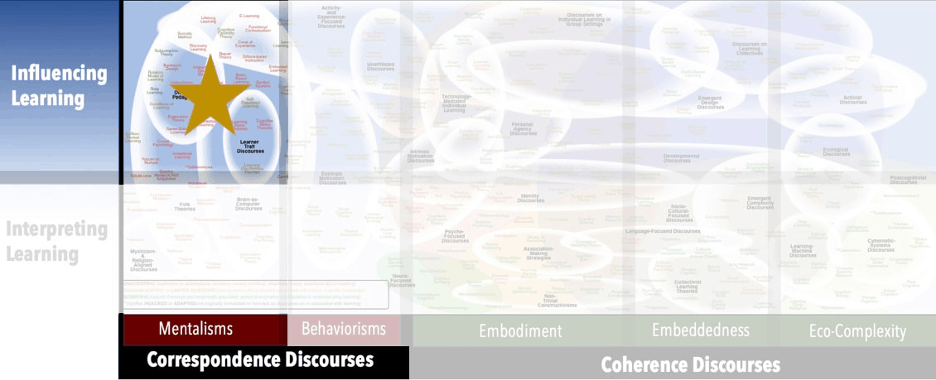Focus
Helping students become their own teachersPrincipal Metaphors
- Knowledge is … achievement results
- Knowing is … satisfactory performance
- Learner is … a performer
- Learning is … improving achievement scores
- Teaching is … impacting achievement scores
Originated
2000sSynopsis
Visible Learning is the title of a 2008 book in which John Hattie summarized the research into more than 100 teaching emphases and practices. (This number has since increased to over 250.) Based on quantitative meta-analyses of published studies, Hattie calculated the impact (usually defined in terms of changes in student achievement) of and ranked those strategies. The most impactful revolved around tactics to raise student awareness of their own achievements (e.g., self-reported grades, formative assessment). That result led to Hattie’s meaning for the term Visible Learning, which has to do with helping students become their own teachers by rendering their learning visible to them and others.Commentary
Visible Learning is part of a broader notion:- Evidence-Based Learning (Evidence-Based Teaching; Evidence-Based Education; Evidence-Informed Classrooms) – A more general construct than Visible Learning, but rooted in the same sensibilities and anchored to the same commitments, Evidence-Based Learning encompasses teaching practices and schooling structures that have been deemed effective through some manner of empirical demonstration.
Authors and/or Prominent Influences
John HattieStatus as a Theory of Learning
Within Visible Learning, learning tends to be treated as synonymous with achievement.Status as a Theory of Teaching
Visible Learning is almost entirely focused on teaching emphases and practices, and so it is properly identified as being focused on teaching.Status as a Scientific Theory
Despite a veneer of scientific rigor – which is supported by its consideration of hundreds and hundreds of quantitative studies – Visible Learning actually falls short on more than one of our criteria or a scientific discourse. Most obviously, very little attention is given to assumptions about, metaphors for, and definitions of learning – which is perhaps necessitated by the instrumental focus on achievement results. In addition, the work has been criticized for its numerous methodological flaws.Subdiscourses:
- Evidence-Based Learning (Evidence-Based Teaching; Evidence-Based Education; Evidence-Informed Classrooms)
Map Location

Please cite this article as:
Davis, B., & Francis, K. (2025). “Visible Learning” in Discourses on Learning in Education. https://learningdiscourses.com.
⇦ Back to Map
⇦ Back to List
